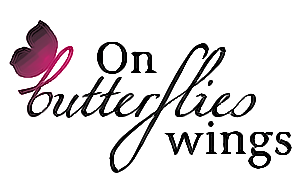Where are the swallowtails?
/Dale Clark
The bordered patch can wait out the drought in its caterpillar stage. It goes into estivation, a summer hibernation, until nectaring flowers reappear.
1 of 4
AText Size
By DALE CLARK Special Contributor
Published 24 August 2011 04:37 PM
Not a day goes by that someone doesn’t ask me about this summer’s scarcity of butterflies. Gardeners have set out flowers rich in nectar and plants specifically chosen to host different species’ eggs and the hatched caterpillars, seemingly with no takers.
Weather is one of the greatest influences on a butterfly’s life. The double-whammy of a drought and a record-breaking heat wave has caused native butterfly populations, in general, to tumble. While this is disappointing to gardeners who have struggled to keep their butterfly banquets green and flowering, it is a natural response of the insect to these cruel climatic conditions.
Butterflies, however, have adapted numerous strategies for survival. As a species, this is not their first drought.
While you may have had Eastern black swallowtail caterpillars consuming dill or parsley in your garden in early summer, you probably have noticed a drop in visitors since the mercury hit the area’s long streak of 100-plus temperatures. If conditions are too severe, a swallowtail chrysalis can go months (or even years) before a butterfly emerges, a survival technique that also applies to pipevine, giant and tiger swallowtails.
The bordered patch butterfly, and other closely related species, can wait out the drought in the caterpillar stage. When the quality of their host plants (sunflowers, ragweed and cowpen daisies) begins to falter, they stop eating and go into estivation, a sort of summer hibernation, and wait until the rains rejuvenate the plants they live on.
One of the most reliable butterfly host plants a gardener can cultivate is passionvine (Passiflora spp.). This is the only plant genus on which Gulf fritillary butterflies will lay their eggs. Usually by August homeowners are complaining that their vines have been stripped bare, but not this year. Trellises and fences are enveloped in lush growth and gardeners are enjoying plenty of the exotic blooms. So where are the Gulf fritillaries?
The natural life history of the Gulf fritillary is that it immigrates to our area each spring and summer from more southerly locales. Instinct drives this journey because Gulf fritillaries cannot tolerate extended periods of freezing temps and because our native passionvines usually die to the ground in winter, so the insect must recolonize its range every year.
However, with the popularity of butterfly gardening and the increased use of one passionvine in particular — ‘Blue Crown’ (P. caerulea) — a slight wrinkle has developed. ‘Blue Crown’ is semi-evergreen in North Texas; in mild winters the orange-and-black fritillary can survive and continue breeding, withstanding brief spells of freezing temperatures and giving the butterfly a head start in spring reproduction.
However, this past winter’s single-digit temperatures killed overwintering Gulf fritillaries and many ‘Blue Crown’ passionvines. That, coupled with the current drought, has greatly reduced the numbers of this particular butterfly.
Once the heat wave breaks and rain occurs, the numbers of butterflies will increase. Mother Nature has done all of this before and, in the long run, butterflies know how to cope and survive. Keep tending those nectar and host plants; eventually, they will be needed and appreciated.
Dale Clark is co-founder of the Dallas County Lepidopterists’ Society.
garden@dallasnews.com










